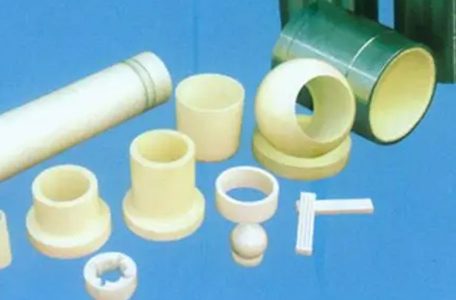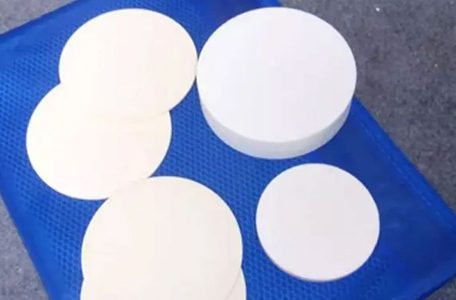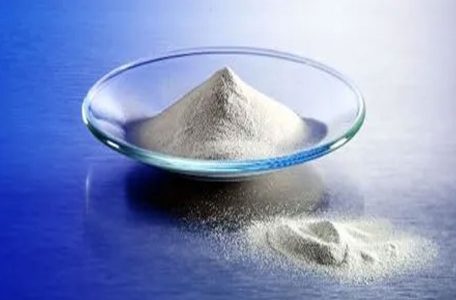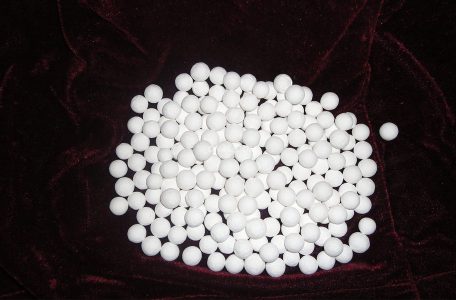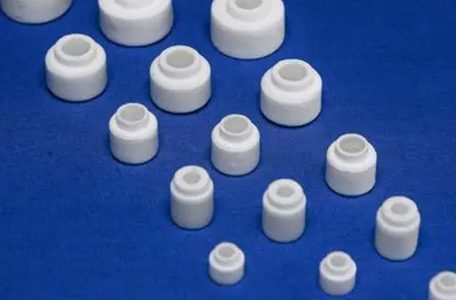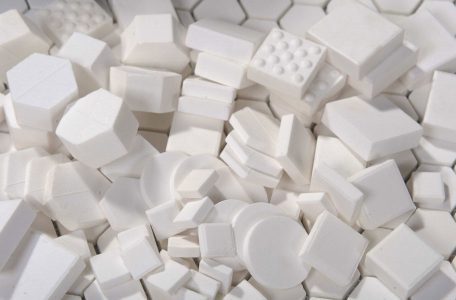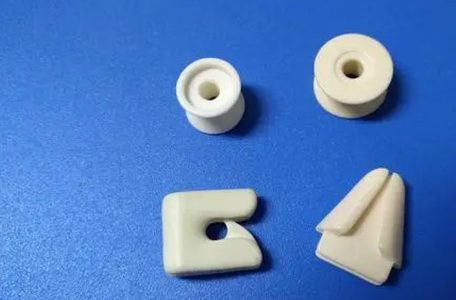Alumina ceramics are divided into various types such as 95 alumina, 998 alumina, 995 alumina, etc. due to their different alumina content. 99 alumina ceramic is a kind of high purity, and its mechanical properties will be stronger. Do you know the characteristics and application of 99 alumina ceramics? The following will be introduced by Pintejin Ceramics Factory about the characteristics of 99 alumina ceramics. and applications. 99 alumina ceramic rod Before introducing the characteristics of 99 alumina ceramics, first understand the 99 alumina ceramics. 99 alumina ceramic materials are often used in chemical and physical grinding environments, especially high-purity alumina is a very good material for the production of Read more
Tape casting, also known as belt casting method and doctor blade method, is an important molding process for thin ceramic materials. The process was first used by GN. Howatt is used in the field of ceramic forming and has been used in the production of single-layer or multi-layer thin-sheet ceramic materials since it was patented in 1952. The tape casting molding equipment is relatively simple, the process is stable, the continuous operation is possible, the production automation is convenient, and the production efficiency is high. The disadvantage of tape casting is that the binder content is high, so the shrinkage rate is large (up to 20%). At present, this process Read more
Pintejin Ceramics Factory is a manufacturer specializing in the production of structural ceramic parts. Structural ceramics are a type of fine ceramics. This type of ceramic has a series of advantages such as high temperature resistance, corrosion resistance, wear resistance, erosion resistance, etc. The following is a brief analysis of structural ceramics by Pintejin ceramics. Classification of structural ceramics for structural alumina ceramic tubes: There are many types of structural ceramics, which are classified into the following series according to raw materials: Oxide ceramics, mainly including alumina ceramics, zirconia ceramics, mullite ceramics, etc.; Carbide ceramics, mainly including silicon carbide ceramics, titanium carbide ceramics, boron carbide ceramics, etc.; Boride ceramics, There Read more
With the development of my country’s economy and the change of consumption consciousness, traditional industries have also entered the fast lane of development. For zirconia ceramic enterprises participating in the fierce market competition, the brand is not a fashion or avant-garde theory, but a practical and effective tactic. What is needed is to let customers finally become users and sharers of products and services among many choices. and communicators. Therefore, zirconia ceramic enterprises need to do a good job of zirconia ceramic brand building strategy in order to truly stabilize their market position. 1. Why zirconia ceramic enterprises should build brands Abandoning academic concepts and introducing popular language, in short, Read more
Pintejin Ceramics is a professional manufacturer of zirconia ceramics. Do you know enough about zirconia ceramics? The following is a detailed introduction of zirconia ceramics by Pintejin ceramic manufacturers. Zirconia Ceramic Sheet Pure zirconia ceramic is white, yellow or gray when it contains impurities, and generally contains HfO2, which is not easy to separate. The world’s proven zirconium resources are about 19 million tons, and zirconia is usually obtained by purifying zirconium ore. There are three crystal states of pure ZrO2 under normal pressure: monoclinic (Monoclinic) zirconia (m-ZrO2), tetragonal (Tetragonal) zirconia (t-ZrO2) and cubic (Cubic) zirconia (c-ZrO2). The production of zirconia ceramics requires the preparation of powders with high purity, Read more
Silicon carbide ceramics are non-oxide ceramic materials without any metal elements. They are composed of carbon and silicon elements. They have a particle structure similar to diamond, so they are high-strength, hardness and high-temperature corrosion-resistant ceramics. Industrial ceramics are also the most widely used ceramics among non-oxide ceramics. Silicon carbide ceramics have different properties and different application fields due to their different preparation processes, but they are mainly used as high-temperature structural materials, refractory materials, and wear-resistant mechanical seals by using their high temperature resistance, wear resistance, corrosion resistance and other characteristics. materials, acid and alkali-resistant corrosion-resistant materials and high-temperature heat exchange materials, etc. Silicon carbide ceramics can be divided Read more
Insulating ceramic materials are favored by many people because of their beauty, cleanliness and practicality. With the rapid development of modern society, many people are paying attention to this product. The following is an analysis of insulating ceramic materials by Pintejin ceramic manufacturers. Alumina insulating ceramic tube Insulating ceramics, also known as device ceramics, are used in electronic equipment to install, fix and protect components, as an insulating support for current-carrying conductors and ceramics for various integrated circuit substrates. It has low dielectric constant, low dielectric loss, high mechanical strength, and high dielectric strength, insulation resistance and thermal conductivity. Commonly used insulating ceramics include alumina ceramics, talc ceramics, etc. With Read more
As a kind of material, the structure and performance of advanced ceramics are closely related to the preparation process. It is very important to understand and master its preparation process and required preparation technology. In the modern three major materials. That is, among metals, organic polymers and inorganic non-metallic materials, the preparation process of inorganic non-metallic materials is the most special and the most diverse. Metal materials (except cemented carbide) are generally obtained by melting minerals. Such as steel materials, can also be obtained by electrolysis of salt solutions; such as aluminum, copper and so on. The point of the metal material preparation process is that the liquid phase process Read more
With the continuous development and progress of science and technology, Dongguan industrial ceramic products with superior performance have been widely recognized by the society. Do you have any precautions when using functional ceramic rods? The following is a professional manufacturer of zirconia ceramics, alumina ceramics and other functional ceramics to introduce the three points of attention for the use of industrial ceramic rods. Precautions for the use of industrial zirconia ceramic rods Dongguan functional wear-resistant ceramic rods: 1. The surface temperature should not be too high. Even very durable wear-resistant ceramic rods need to pay attention to the temperature of the use environment, because its life will be affected by Read more
Silicon carbide ceramics outperform other ceramic spare parts in certain industrial applications. There are many ceramic spare parts in the market, such as alumina ceramic parts, zirconia ceramic parts, silicon carbide ceramic parts. The following is a detailed introduction to the use and characteristics of silicon carbide ceramics by Pintejin ceramic manufacturers. Silicon carbide ceramic ring In air, silicon carbide begins to oxidize at 800°C, but very slowly. The oxidation rate increases rapidly with increasing temperature. Silicon carbide oxidizes 1.6 times faster in oxygen than in air and slows down with time. A typical parabolic profile can be obtained if quantitative oxidation traces occur over time, which reflects the effect Read more

Ceramic Machining Industry
- Ceramic Flange
- Ceramic Nozzle
- Ceramic Pin
- Ceramic Plunger
- Ceramic Rod
- Ceramic Shaft/Ceramic Sleeve
- Ceramic Structure Parts
- Ceramic Valve
- Ceramics Cutter
- Electronic Ceramics
- Medical Food Ceramics
- Petrochemical Ceramics
- Photovoltaic Ceramic
- Semiconductor Ceramics
- Microporous Ceramic Suction Cup
- Lithium Battery Ceramic Pump
